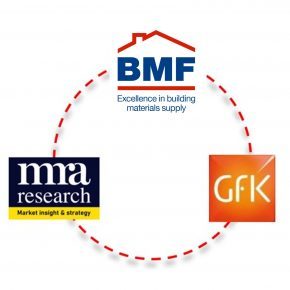
ABC&D MAG ARTICLE: taking a risk on sustainability
It is widely accepted that global climate change is already having observable negative effects on the environment. As a result, it has never been more important for businesses to adopt more sustainable practices. From the ways we live and work, to how we design and build spaces, there is a place for sustainability in almost every aspect of our lives. However, becoming a sustainable business often involves taking risks. Jon Khoo, innovation partner at Interface, explores the steps that must be considered to help achieve sustainability within a business, in the latest issue of ABC&D magazine.
Earth’s average surface temperature has risen by approximately 0.9°C since the late nineteenth century1. This change has been driven largely by an increase in anthropogenic carbon dioxide emissions, essentially, those caused by human activity. As a result, we are seeing glaciers shrink, sea levels rise and extreme weather conditions including intense rainfall events and flooding in certain parts of the world.
Greenhouse gas emissions are only set to continue rising, which will, in turn, worsen the impacts of global warming. While larger companies are expected to report on their carbon emissions, SMEs are not forced to conform to any regulation, despite contributing up to 50% of the UK’s total emissions. It is, therefore, clear that more and more businesses need to take action now, without waiting on regulation which forces them to act. Through adopting a sustainable approach to business, there is an opportunity to help all alleviate the negative effects of climate change.
In the built environment, architects and designers have a key role in raising awareness of sustainability – it is an opportunity to use their sphere of influence. Essentially, the products they specify will have a direct impact on our climate. By choosing materials in a sustainable way, it is also possible to improve long-term profitability, enhance efficiencies, and improve spaces and wellbeing for those who are using buildings.
Challenges to adoption
There’s no question that becoming a sustainable company represents a risk, but with consumers becoming ever more savvy about corporate environmental and social responsibility, failing to engage on sustainability represents a risk to the longer-term future of the business. Risks that might be under consideration include investigating in new manufacturing processes, switching virgin materials for recycled materials or changing your product into a service.
Reducing embodied carbon is perhaps the most urgent challenge of all for the built environment. Carbon emissions from building materials and products during their manufacture, transport use, and disposal, known as embodied carbon, contribute significantly to greenhouse gas emissions in the built environment. The greatest opportunity for impact on embodied carbon comes at the design stage.
Low embodied carbon building designs help ensure projects are more resilient to future resource and materials depletion and energy price rises.
To reduce embodied carbon and overcome environmental and resource management issues, we are seeing companies moving away from the traditional linear models and, instead, exploring ways to re-use products and materials. This is the transition to a sustainable business model, such as the circular economy – a system that is restorative or regenerative by intention and design.
As well as the efficient use of resources and materials, it is also important to identify designs that optimise building use and use more efficient transportation and construction processes which, ultimately, can all lead to reductions in embodied carbon. Although costs may be associated in the short-term, businesses must look at the long-term cost savings and profitability that sustainable business will help to achieve.
Also, more and more companies are now looking at their own carbon footprint and how they can reduce it through their supply chain. Carbon reporting is increasingly a key part of the procurement process. Therefore, adopting environmentally-friendly operations which use renewable energy, or limiting the use of virgin raw materials, helps give companies competitive advantage by providing low carbon options.
Putting sustainability into practice
It is crucial that companies set bold goals on sustainability. They must start by reviewing their existing operations to identify where significant improvements can be made in the short-term. Then they need to put in place processes that test and challenge the business to guarantee success in the long-term. For example, in 1994 Ray Anderson, founder of Interface, realised that the company was having a significant negative impact on the environment, but he saw the potential to change to a successful business using sustainable products.
This sparked the launch of Mission Zero – a public commitment to have no negative impact on the environment by 2020. This approach has inspired new ways of working across all areas of the organisation – from sourcing raw materials to manufacturing and the management of products at end of life. Looking beyond this, in 2016, Interface introduced its Climate Take Back mission with the aim to reverse the impact of global warming. To help achieve this, the company set out the following four objectives:
- Live Zero – show the world that zero negative impact on the environment is possible
- Love carbon – to stop seeing carbon as a problem, but as a resource and opportunity
- Let Nature Cool – to support our biosphere’s ability to regulate the climate; for example, Interface works with Biomimicry 3.8 to assess how to run factories as forests, to create facilities that play a restorative role in their surrounding ecosystems
- Lead industry re-revolution – to transform industry into a force for the future, we want to inspire other businesses, for example, creating supply chains that benefit all life.
In keeping with its commitment to Climate Take Back, Interface has recently taken an holistic approach to carbon neutrality, and it has announced that all of its products – both carpet tile and luxury vinyl tile (LVT) – are carbon neutral; any product, any location and for no additional cost.
This has been achieved by analysing carbon emissions across the entire product lifecycle and working for two decades to reduce the footprint by an estimated 60% and provide offsets for the remainder. It is estimated that Interface will offset 400,000 metric tons of carbon emissions in 2018, which is equivalent to the carbon absorbed annually by nearly half a million acres of forest.
Collaboration between businesses will be crucial in reversing the impact of climate – carbon Neutral Floors enable Interface to celebrate its customer’s risk-taking for a more sustainable future. The time to act is now. Companies need to be proactive when it comes to reducing their environmental footprint and will need to improve their resilience and ability to respond quickly to the challenges that climate change brings to the built environment.
To read the full magazine for free, click here.
Latest news

27th November 2024
BMBI: Q3 Merchant value sales rose +1.7% quarter-on-quarter
The latest total value sales figures from Builders Merchant Building Index (BMBI) show that sales for Q3 2024 were down -2.6% compared to Q3 2023.
Posted in Access Control & Door Entry Systems, Architectural Ironmongery, Articles, Bricks & Blocks, Building Associations & Institutes, Building Industry News, Building Products & Structures, Building Services, Concrete, Cement, Admixtures, Doors, Health & Safety, Information Technology, Interior Design & Construction, Interiors, news, Paints, Paints, Coatings & Finishes, Research & Materials Testing, Restoration & Refurbishment, Retrofit & Renovation, Security and Fire Protection
27th November 2024
SWA guides on the installation of steel windows and doors
The Steel Window Association has developed a series of fact sheets; all are viewable and downloadable here. The following is a synopsis of the installation fact sheet which has been compiled by the industry’s experts.
Posted in Articles, Building Industry News, Building Products & Structures, Building Regulations & Accreditations, Building Systems, Doors, Glass, Glazing, Innovations & New Products, Publications, Research & Materials Testing, Restoration & Refurbishment, Retrofit & Renovation, Steel and Structural Frames, Windows
27th November 2024
Abloy electronic access control: Ensuring safe escape door compliance in schools
Paul Nicholas, at Abloy UK, discusses the importance of escape door compliance in schools, and specifying the correct electronic access control solution to ensure life safety.
Posted in Access Control & Door Entry Systems, Architectural Ironmongery, Articles, Building Industry News, Building Products & Structures, Building Regulations & Accreditations, Building Services, Doors, Facility Management & Building Services, Health & Safety, Innovations & New Products, Posts, Retrofit & Renovation, Security and Fire Protection
27th November 2024
Hambleside Danelaw Top 5% in EcoVadis Assessment
Hambleside Danelaw has completed the EcoVadis assessment process, being awarded a Gold medal, categorising the company in the Top 5% of all companies in the EcoVadis database over the last 12 months.
Posted in Articles, Building Associations & Institutes, Building Industry News, Building Products & Structures, Building Regulations & Accreditations, Building Services, Drainage, Guttering, Soffits & Fascias, Lighting, Restoration & Refurbishment, Retrofit & Renovation, Roofs, Site Preparation, Sustainability & Energy Efficiency, Walls, Waste Management & Recycling
 Sign up:
Sign up: